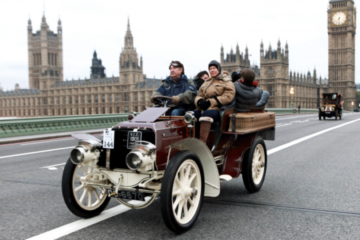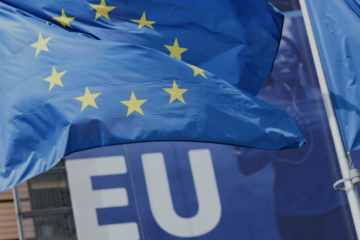On the 17th of January, the UK broke a precedent in how Western aid had been characterised since the start of the conflict in Ukraine, as it was announced that 14 Challenger 2 Main Battle Tanks (MBT) would be supplied to assist Ukrainian efforts against Russia. While the actual military and strategic value of this decision is expected to be low, the political impact and subsequent pressure on countries who were yet to send tanks has been significant. Most notably, this decision went in stark contrast to Germany’s policy of resisting Ukraine’s request for Leopard 2 tanks, with the monumental increased political pressure following the UK’s decision eventually forcing Germany to relent. Though Germany did initially waive export controls to allow other countries, such as Poland, to supply their own Leopard 2s, it was only on the 25th of January that the country announced that it too would supply tanks, authorising the provision of 14 Leopard 2s.
By the end of January, the UK and Germany, both of whom had originally opposed sending tanks to Ukraine, began to reverse that policy. Yet, the circumstances which facilitated these shifts in policy differ, with the UK spearheading this move for Western tank supplies, and Germany remaining stubborn until political pressure forced the government to relent. Therefore, it must be asked: What caused this difference in approaches?
The UK has consistently voiced support for sending further assistance to Ukraine since the beginning of Russia’s ‘Special Military Operation’ in February 2022, and the country’s recent decision is a notable expression of this stance. Though it had initially joined Germany in refusing to provide tanks to Ukraine, as both were concerned about escalating tensions with Russia, with the conflicting dragging on the UK has become more confident and willing to supply Ukraine with more advanced weaponry. However, the decision to send 14 Challenger 2 MBTs has not been met without controversy. Following the announcement, British Army General Sir Patrick Sanders stated in an interview with the BBC that while Ukraine would put them to ‘good use’, the decision had ‘temporarily weakened’ the British military. Furthermore, Civitas’ Director of Defence and Security Robert Clark raised the issue that sending Challenger 2s would give Russia the opportunity to capture them, thus gaining vital military intelligence against Britain.
Despite this, the UK has stuck to its commitments.There are of course many assumptions to be made to explain why the country has decided to break this precedent in Western lethal aid, but the persuasive one is that the UK expected that by providing these MBTs, other nations would have to follow suit. At present, this has proven true, with the West giving Ukraine the opportunity to launch an effective counteroffensive using advanced equipment. For the UK, which has committed much towards the war effort, it is important for Ukraine to achieve victories against Russia, especially as concerns rise over its gains in Bakhmut and Vuhledar – battles which have been raging for months. The policy goal stems from the dire domestic situation in the UK. Amid threats of recession, waves of trade union strike actions, and a NHS crisis, the Government needs a success to serve as a distraction. Much like how the Russian withdrawal from Izyum and Kherson city was viewed as a victory for Ukraine and its allies, including the UK, a significant military success against Russia may provide the Government with the boost in popularity it needs.
So far, it seems that the UK Government has succeeded in the gamble that by taking the initiative, it would pressure fellow Western allies to join the aid effort. With Ukraine now receiving tanks from the UK, Poland, Germany and the US, the political and military consequences for both the British government and the general conflict remains to be seen.
Germany has been far more risk-averse than the UK. While the nation has been one of the largest suppliers of arms to Ukraine’s war effort, it has frequently been accused of ‘dragging its feet’ when it comes to providing more advanced military equipment. Though Germany has decided to send Leopard 2s to Ukraine, prior to this its government stated that any shipments would be dependent on the US also sending tanks, specifically the Abrams, a condition that was eventually fulfilled. Yet with this in mind, this entire ordeal has demonstrated how Germany views the conflict in a very different light than the UK, as unlike the British, there remains concerns within the country about further escalation against Russia. This is in part due to the complicated relationship between the two nations. While Germany has managed to end its dependence on Russian energy, there still remains great scepticism on siding overtly with the US against Russia, especially when it comes to the matter of how and what assistance should be provided to Ukraine. Germany, of course, is not alone in this concern, with France having accused the US of profiting from the war amidst severe economic ills in Europe months prior to the current tank predicament.
Germany’s concerns, however, primarily stem from the memories of the Second World War . For many citizens, sending tanks to fight Russia in Ukraine is a ‘red line’, and is subject to notable opposition. Opinion polls have found that 45% of Germans do not wish to provide this form of aid, due to both the risk of direct confrontation with Russia, as well as a dislike of the idea of German weapons being used in World War 2 hotspots. For many German voters, there is a consistent hope for the ‘peace option’ and avoiding escalation. There is concern that sending tanks would simply further the violence, without fundamentally ‘altering the course of the war’, as explained by German Foreign Policy Expert, Thomas Kleine-Brockhoff of the German Marshall Fund (GMF). Within the Bundestag itself, this opposition is apparent – prior to the decision to send tanks, Petr Bystron of the Alternative für Deutschland (AfD) party stated that “The result [of sending German tanks in WW2] was immense suffering, millions of casualties on both sides and, eventually, Russian tanks came here, to Berlin.”
Ukraine will ultimately receive tanks from both the UK and Germany, regardless of how either nation goes about making the decision, and while US President Joe Biden has called this a ‘united effort’, it is difficult to view the European nations as being on the same footing. In eagerly taking the initiative, the UK has seized a leadership position on the issue. Germany, however, has only acted following considerable external pressure, only to be met with sizable domestic opposition.This ordeal has made it clear that the provision of arms to Ukraine is not a cut-and-dry issue across the Western world.


